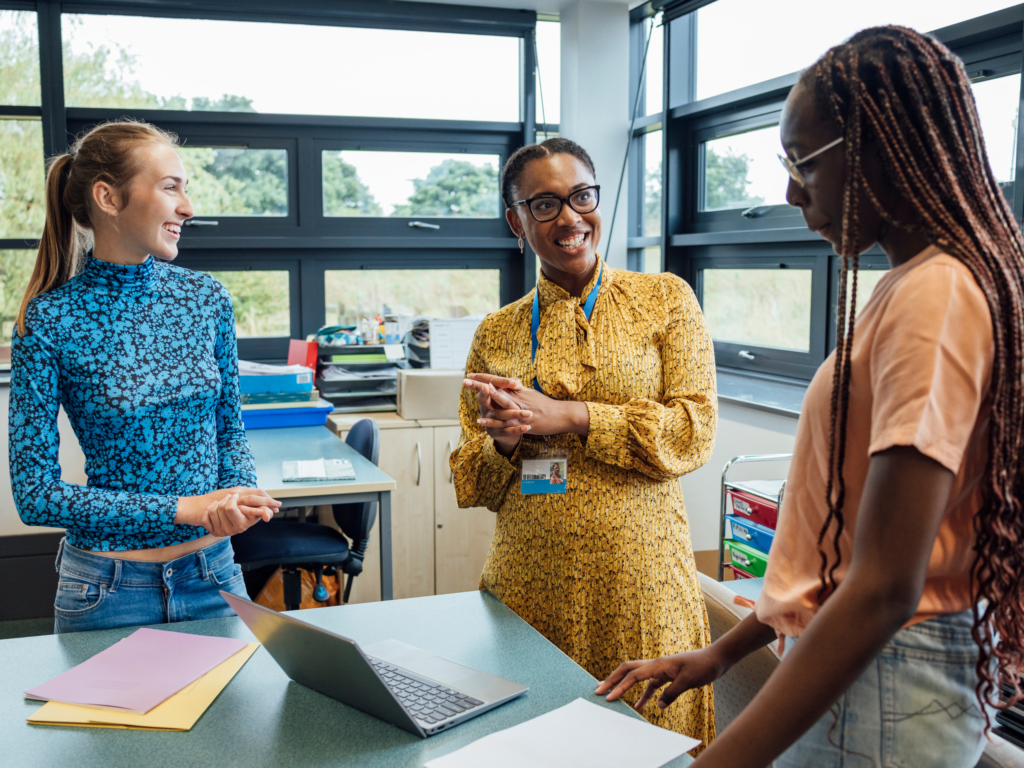As 2024 comes to a close, I find myself reflecting on both the challenges and the opportunities we’ve seen in education this year. Across the country, young people are asking for something better — learning experiences that are meaningful, engaging, and connected to their futures. At NewSchools, we’re inspired by how educators and entrepreneurs are stepping up to this moment. They’re designing solutions that respond to the needs of today’s learners. In this first year of our new investment strategy, we invested $13.4 million in 54 early-stage ventures reimagining education. Here’s a look at some of the most interesting themes across our investing activity, as well as promising innovations that bring us closer to ensuring every student is prepared to thrive in school and in life.
New High Schools Bridge Classrooms and Careers
High school should set students up for success, but right now, it isn’t working for everyone. Nearly 15 million students are chronically absent, and 42% say they feel disengaged, sad, or hopeless. Yet 80% of students say they value on-the-job training more than traditional post-secondary options (Gates Foundation). Career-connected learning is one way to make high school relevant again. By teaming up with colleges, businesses, and community organizations, schools are giving students opportunities to explore careers, gain hands-on experience, and earn credentials that lead to good jobs.
This year, 52% of the school teams we’ve funded are creating new middle and high school models that connect learning to real-world opportunities. For example, Philadelphia Middle College Foundation is designing a school where students begin exploring career and college pathways in middle school, then continue in high school with internships, early college credits, and certifications in fields like healthcare and technology. In Georgia, Simple Vue Academy will help students take on real-world challenges and prepare for entrepreneurship and financial management with internships, business pitch competitions, and mentorship programs. These models will not only help students build durable skills, but also give them a clear path to meaningful careers and economic mobility.

A Resurgence in Rural Innovation
With more students leaving urban centers, there’s a renewed focus on ensuring rural communities have great schools and access to economic opportunities. We’re seeing creative approaches in rural education that address the unique challenges and incredible potential of these communities. Schools like Namahana School in Hawaii and Sledge Institute in North Carolina are designing models rooted in competency-based learning and career-focused programs aligned with local industries like agriculture and advanced manufacturing to prepare students for high-demand jobs.
Beyond academics, rural schools are becoming hubs for critical services like mental health support, food security, and healthcare. These partnerships aren’t an afterthought — they’re being built into the design of schools from the very beginning. In some cases, nonprofit organizations are leading the way by pooling resources and talent across districts and creating shared models that bring robust career and technical education (CTE) pathways to life. These efforts show how constraints can spark innovation.
Literacy Solutions Designed to Unlock Learning for Every Student
Education should work for all students, but too often, “one-size-fits-all” approaches leave too many learners behind. Generative AI is changing that, enabling solutions that adapt to students’ unique strengths and needs in ways we couldn’t imagine before. The innovators we’re supporting are tapping into this potential.

They are creating solutions that bridge research and practice and place learners furthest from opportunity at the center of their designs. Take Project Read AI, for example, which uses generative AI to create personalized reading experiences grounded in the Science of Reading and explicit instruction. With accessible fonts and an AI tutor, it supports early readers, including those with dyslexia, through oral instruction and repeated readings.
Other innovators in our portfolio are addressing the disconnect students feel when learning materials don’t reflect their lives. For example, Bilingual Generation’s BiliApp features Spanish-language stories and phonics games that celebrate students’ cultural backgrounds while building literacy skills. By strengthening literacy in their home language, Bili helps students build a strong foundation for learning English. What makes these solutions stand out is their ability to combine research-backed practices with approaches that honor students’ identities and lived experiences, ensuring every student feels seen, engaged, and inspired to learn.
Innovations in Reimagining the Teaching Profession
This year, I’m especially proud of the launch of our Teaching Reimagined investment area, which supports solutions that make teaching a more sustainable, effective, and fulfilling profession. I was inspired to see that over half of the ideas submitted came directly from former and current classroom teachers — people who understand the challenges firsthand and are driving change from within. We funded a range of efforts, including ventures that are bridging divides across traditional education roles and positioning teachers and community members as equal partners in reimagining the educator workforce. You can learn more about them in our latest blog.
To meet the challenges ahead, we need more visionary leaders with bold ideas — and supporters ready to step up and make a difference. If you’re an innovator with a vision to create more meaningful and relevant learning experiences for students, we invite you to apply to our funding opportunity.
Finally, thank you to our innovators, supporters, and partners who joined us this year to unlock new possibilities for students. Your dedication fuels our resolve to ensure every student has a life of choice and opportunity. Across the country, students are asking for something better — and with your partnership, we’re ready to deliver.




